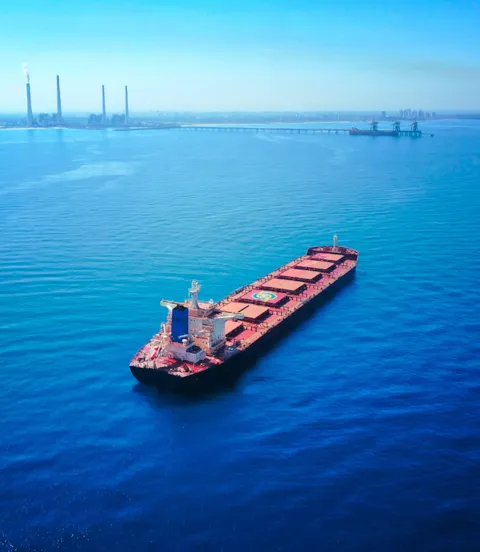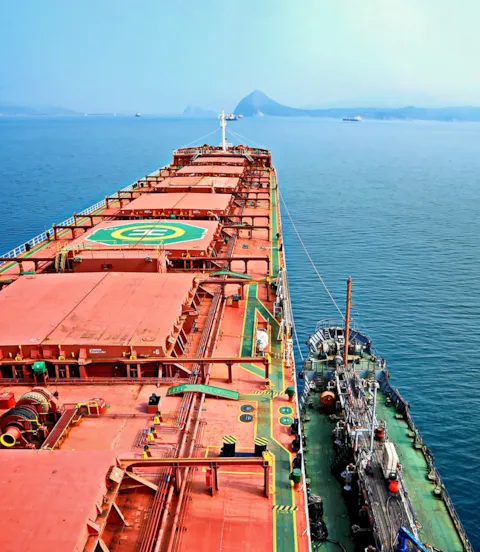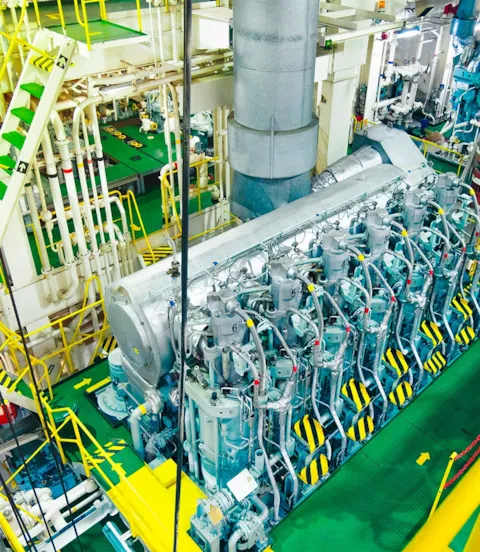Finding the best design for a future-proof bulker
Shipowners face high uncertainty when picking engines and fuel systems for a newbuild. The design must ensure that a ship remains compliant and competitive over its lifetime to meet or beat greenhouse gas (GHG) emissions regulations and targets.
To help shipowners choose, DNV GL’s latest Maritime Forecast to 2050 has developed 30 scenarios covering varying assumptions about regulations, fleet growth and fuel prices across the three decarbonization pathways described in our GHG Pathway Model. Briefly, the pathways, listed from the slowest to quickest decarbonization, are No ambitions, IMO (International Maritime Organization) ambitions and Decarbonization by 2040.
“Applying the scenario and pathway assumptions to designs for a new Panamax bulk carrier as a case study shows how modelling commercial robustness can stress-test engine and fuel-system options across a wide range of possible decarbonization futures,” says Tore Longva, principal consultant, DNV GL – Maritime, and lead author of the report. “Similar robustness analyses could be performed for any segment in the world fleet.”
The Panamax case study applies DNV GL’s three-step Carbon-Robust Model framework for future-proofing ships. The framework first defines key performance indicators (KPIs) and selected designs. It next models the impact on KPIs for each design in each scenario. Finally, it compares the results of the modelling.

Evaluating design options for a newbuild Panamax bulk carrier
DNV GL’s model evaluates three relevant engine and fuel systems for the newbuild Panamax bulk carrier case study. These are a mono-fuel diesel engine running on very-low-sulphur fuel oil or marine gas oil (VLSFO/MGO), a mono-fuel diesel engine running on heavy fuel oil (HFO) with a scrubber fitted, and a dual-fuel liquefied natural gas (LNG) engine capable of running on LNG and VLSFO/MGO.
To measure the robustness and competitiveness of a design, the model uses a KPI called Daily Cost Delta. This KPI is the difference between the technology break-even cost and market benchmark rate for a specific segment and year, averaged over a 20-year period. Technology break-even is the total cost of the vessel including all capital and operational expenses (including fuel), annualized and divided into a daily cost.
As a proxy for market rate – the potential income for the ship – DNV GL uses the lowest technology break-even cost for a technology with a market share of at least 15 per cent. Above that threshold, a charterer should have a reasonable selection of ships with this technology, and the technology break-even cost serves as a market benchmark rate for the segment. Having a positive Daily Cost Delta means lower break-even costs than the market benchmark, and hence greater profitability

Which engine and fuel system are most robust in the bulk carrier case study?
The mean Daily Cost Delta is highest for the dual-fuel LNG engine and fuel system. The spread in values for this KPI between scenarios is similar for the LNG and scrubber-fitted diesel engines, but most scenarios cluster at higher values for the LNG option. “The learning is that installing a dual-fuel LNG engine consistently yields better margin between the market benchmark rate and the break-even cost. In other words, it is consistently the most robust choice,” says Longva.

Accelerating decarbonization will complicate ship design choices
All design options for the Panamax bulker generally perform worse in the Decarbonization by 2040 scenarios, where ships built today must switch to carbon-neutral fuel sometime in the 2030s, and well within the ship’s lifetime. No matter the option chosen today, the ship later models at a competitive disadvantage to other vessels in the segment with new technologies. That said, dual-fuel LNG engines perform best.

Why dual-fuel LNG engines are more carbon-robust in our case study
Clearly, performance in the case study depends on the fuel-price scenario and decarbonization pathway. “We see three main reasons for the higher comparative performance of the dual-fuel LNG engines in the modelling – cost efficiency, compliance and design flexibility,” says Longva.
The dual-fuel LNG engine can run on cheaper LNG. In addition, ships with LNG engines will have a 20 to 25 per cent reduction in tank-to-wake carbon dioxide emissions. This is a significant benefit for vessels striving to comply with increasingly stringent emissions regulations, although methane slip must be minimized. In contrast, ships with conventional MGO engines will need to apply speed reduction or other costly energy-efficiency measures to stay compliant, placing them at a competitive disadvantage.
The LNG engine and fuel system also remain flexible for future decarbonization options such as setting aside space for, and potentially reuse of, fuel-storage tanks.

Implications for retaining flexibility for drop-in fuels and retrofit
The graphic above shows the main retrofit and drop-in fuel options available for the engine options evaluated in the Panamax bulk carrier case study.
The dual-fuel LNG engine and fuel systems can use the cheapest fuels available today. They could also use a wider range of drop-in carbon-neutral fuels at the end of their lifetimes, or could retrofit to either an ammonia or methanol engine and fuel system. A large number of ships retrofit from LNG to methanol in one of the Decarbonization by 2040 scenarios ( #19), which assumes a low biomass price, low fleet growth, additional design requirements, and new operational requirements. Indeed, a similar pattern emerges in all the Decarbonization by 2040 scenarios, where ships with LNG engines and fuel systems retrofit to either methanol or ammonia engines and fuel systems.
The conventional diesel engine is not inflexible. It can retrofit, for example, to a dual-fuel methanol engine, or switch to bio-MGO or e-MGO. However, its flexibility is less than for the dual-fuel LNG engine, and retrofits for the conventional engine tend to be costly.

A structured approach to future-proofing is required
DNV GL’s robustness assessment shows that picking the wrong solution can lead to a significant competitive disadvantage.
The modelling with scenarios finds that applying a very strict design requirement for newbuilds forces them to run on carbon-neutral fuels. If requirements for existing ships in operation remain less strict, newbuild competitiveness is severely distorted and old ships may be kept in the fleet for a long time. Hence, high uncertainty over future policy measures and fuel availability and prices creates significant risk for today’s newbuild decisions and should be considered by shipowners in managing asset values and the balance sheet.
“A structured approach to future-proofing by planning for flexibility could ease the energy transition in maritime and minimize the risk of investing in stranded assets,” says Longva. “Our bulk carrier case study highlights the need for clear, long-term regulatory signals if we are to expect any changes to ship technologies and fuels.”

Tore Longva
Principal Consultant
- ImagineStock – Shutterstock.com
- masterskuz55 - stock.adobe.com
- seabreezesky – Shutterstock.com